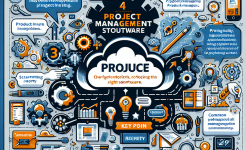Clear Goals and Objectives
Having clear goals and objectives is the foundation of a successful agile sprint and iteration. Before starting a sprint, the team should define what they want to achieve and how it aligns with the overall project vision. This clarity helps the team stay focused and motivated throughout the sprint.
The first step in setting clear goals is to have a detailed understanding of the project requirements and the stakeholders' expectations. The team should engage in discussions with the product owner and other relevant parties to ensure that they have a shared understanding of the project's direction. This includes identifying the key features and functionalities that need to be developed during the sprint.
Once the goals are defined, they should be broken down into smaller, measurable objectives. These objectives should be specific, achievable, relevant, and time-bound (SMART). By setting SMART objectives, the team can track their progress more effectively and make adjustments as needed. For example, if the goal is to develop a new user interface, an objective could be to complete the design of the main screens within the first week of the sprint.
In addition to defining the goals and objectives, it is essential to communicate them clearly to the entire team. Everyone should understand what they are working towards and how their individual tasks contribute to the overall goals of the sprint. This helps to create a sense of ownership and accountability among the team members.
Effective Planning
Effective planning is another critical aspect of agile sprint and iteration. A well-planned sprint ensures that the team has a clear roadmap of what needs to be done and when. It also helps to identify potential risks and challenges and allows the team to take proactive measures to address them.
The planning process should start with a detailed assessment of the project requirements and the team's capacity. The team should consider the skills and expertise of the members, as well as any constraints or dependencies, to determine the scope of the sprint. This includes identifying the user stories and tasks that can be realistically completed within the sprint timeframe.
Once the scope is defined, the team should create a detailed sprint backlog. The backlog should include all the tasks that need to be completed, along with their estimated effort and priority. The tasks should be broken down into smaller, manageable chunks to make it easier for the team to track their progress. The backlog should also be flexible enough to accommodate changes and new requirements that may arise during the sprint.
In addition to the sprint backlog, the team should also define a clear schedule for the sprint. This includes setting the start and end dates, as well as the timings for daily stand-ups, reviews, and retrospectives. The schedule should be communicated to the entire team and stakeholders to ensure that everyone is aware of the important milestones and deadlines.
Continuous Communication
Continuous communication is essential for the success of an agile sprint and iteration. It helps to ensure that the team is working together effectively, that any issues or challenges are addressed promptly, and that the stakeholders are kept informed of the project's progress.
The team should establish a regular communication cadence, such as daily stand-ups. During the stand-ups, team members should share their progress, discuss any blockers they are facing, and plan their activities for the day. This helps to keep everyone on the same page and ensures that the team is moving forward as a unit.
In addition to the daily stand-ups, the team should also have regular meetings with the product owner and other stakeholders. These meetings provide an opportunity to review the progress of the sprint, get feedback on the work done, and discuss any changes or adjustments to the project requirements. It is important to ensure that these meetings are productive and that the discussions are focused on finding solutions rather than dwelling on problems.
Effective communication also involves using the right tools and techniques. The team should use collaboration tools such as project management software, chat applications, and video conferencing to facilitate communication. These tools help to ensure that information is shared quickly and easily, and that team members can access the information they need when they need it.
Collaborative Teamwork
Collaborative teamwork is at the heart of agile development. In an agile sprint and iteration, the team works closely together to achieve the common goal of delivering a valuable product. A collaborative team environment encourages creativity, innovation, and the sharing of ideas.
To foster collaborative teamwork, the team should have a diverse set of skills and perspectives. Each team member brings unique knowledge and expertise to the table, and by working together, the team can leverage these strengths to create a better product. The team should also encourage open and honest communication, where everyone feels comfortable sharing their ideas and opinions.

Another important aspect of collaborative teamwork is the ability to resolve conflicts effectively. Conflicts are inevitable in any team, but in an agile environment, it is crucial to address them quickly and constructively. The team should have a process in place for handling conflicts, such as facilitated discussions or mediation. By resolving conflicts in a timely manner, the team can avoid distractions and stay focused on the project goals.
In addition to working well within the team, the team should also collaborate effectively with other teams and stakeholders. This includes having a good understanding of the dependencies between different parts of the project and working together to ensure a smooth flow of work. By collaborating with others, the team can minimize the risk of delays and ensure that the project progresses as planned.
Regular Feedback and Evaluation
Regular feedback and evaluation are essential for continuous improvement in an agile sprint and iteration. By gathering feedback from the stakeholders and team members, the team can identify areas for improvement and make adjustments to the process.
The team should conduct regular reviews of the work done during the sprint. These reviews can include demos of the features developed, code reviews, and usability tests. The feedback from these reviews should be used to make improvements to the product and the development process. For example, if the usability tests reveal that users are having difficulty with a particular feature, the team can make the necessary changes to improve the user experience.
In addition to the product reviews, the team should also conduct retrospectives at the end of each sprint. The retrospectives provide an opportunity for the team to reflect on the sprint process and identify what went well and what could be improved. The team should discuss the challenges they faced, the solutions they found, and any lessons learned. Based on the discussions, the team can come up with an action plan for the next sprint to address the identified areas for improvement.
Feedback should not only be collected at the end of the sprint but also throughout the process. The team should encourage continuous feedback from the stakeholders and team members. This can be done through regular check-ins, surveys, or informal conversations. By gathering feedback early and often, the team can make timely adjustments and avoid major issues down the line.
Adaptability and Flexibility
In an agile environment, adaptability and flexibility are crucial. The team should be able to respond quickly to changes in the project requirements, market conditions, or customer needs. A rigid approach is likely to lead to delays and dissatisfaction.
To be adaptable, the team should embrace change and view it as an opportunity rather than a problem. When new requirements or changes are introduced, the team should assess the impact and make the necessary adjustments to the sprint plan. This may involve re-prioritizing the backlog, reallocating resources, or adjusting the schedule.
The team should also be flexible in their approach to problem-solving. Instead of following a fixed process, they should be willing to try new ideas and approaches. This encourages innovation and helps the team find the best solutions to the challenges they face. For example, if a particular feature is proving to be more complex than expected, the team could explore alternative design options or technologies to simplify the implementation.
In addition to being adaptable to changes in the project, the team should also be prepared to handle unexpected events or challenges. This requires having a contingency plan in place and being able to quickly adjust the plan as needed. By being flexible and adaptable, the team can ensure that the project remains on track despite the uncertainties.
Focus on Quality
Quality is a top priority in agile development. A high-quality product not only meets the functional requirements but also provides a great user experience. The team should focus on delivering a product that is reliable, performant, and easy to use.
To ensure quality, the team should adopt a test-driven development approach. This means writing tests before writing the code to ensure that the code meets the specified requirements. The team should also conduct regular code reviews to identify and fix any potential issues. In addition, the team should perform usability testing to ensure that the product is intuitive and easy to navigate for the end users.
Another important aspect of quality is continuous integration and deployment. The team should integrate the code frequently and deploy it to a staging environment for testing. This helps to catch any integration issues early and ensures that the product is ready for release. By automating the build, test, and deployment processes, the team can improve the efficiency and reliability of the development process.
In addition to the technical aspects of quality, the team should also consider the non-functional requirements such as security, performance, and scalability. These requirements should be addressed throughout the development process to ensure that the product meets the expectations of the users and the business.
In conclusion, the seven best practices of agile sprint and iteration - clear goals and objectives, effective planning, continuous communication, collaborative teamwork, regular feedback and evaluation, adaptability and flexibility, and focus on quality - are essential for the success of an agile project. By following these practices, teams can deliver high-quality products in a timely manner, respond to changes effectively, and continuously improve their processes. Remember, agile is not a one-size-fits-all approach, and teams should tailor these practices to their specific context and needs. With the right mindset and approach, agile can help teams achieve better results and drive business value.
ARTICLE TITLE :7 best practices of agile sprint and iteration ,AUTHOR :ITpmlib

















